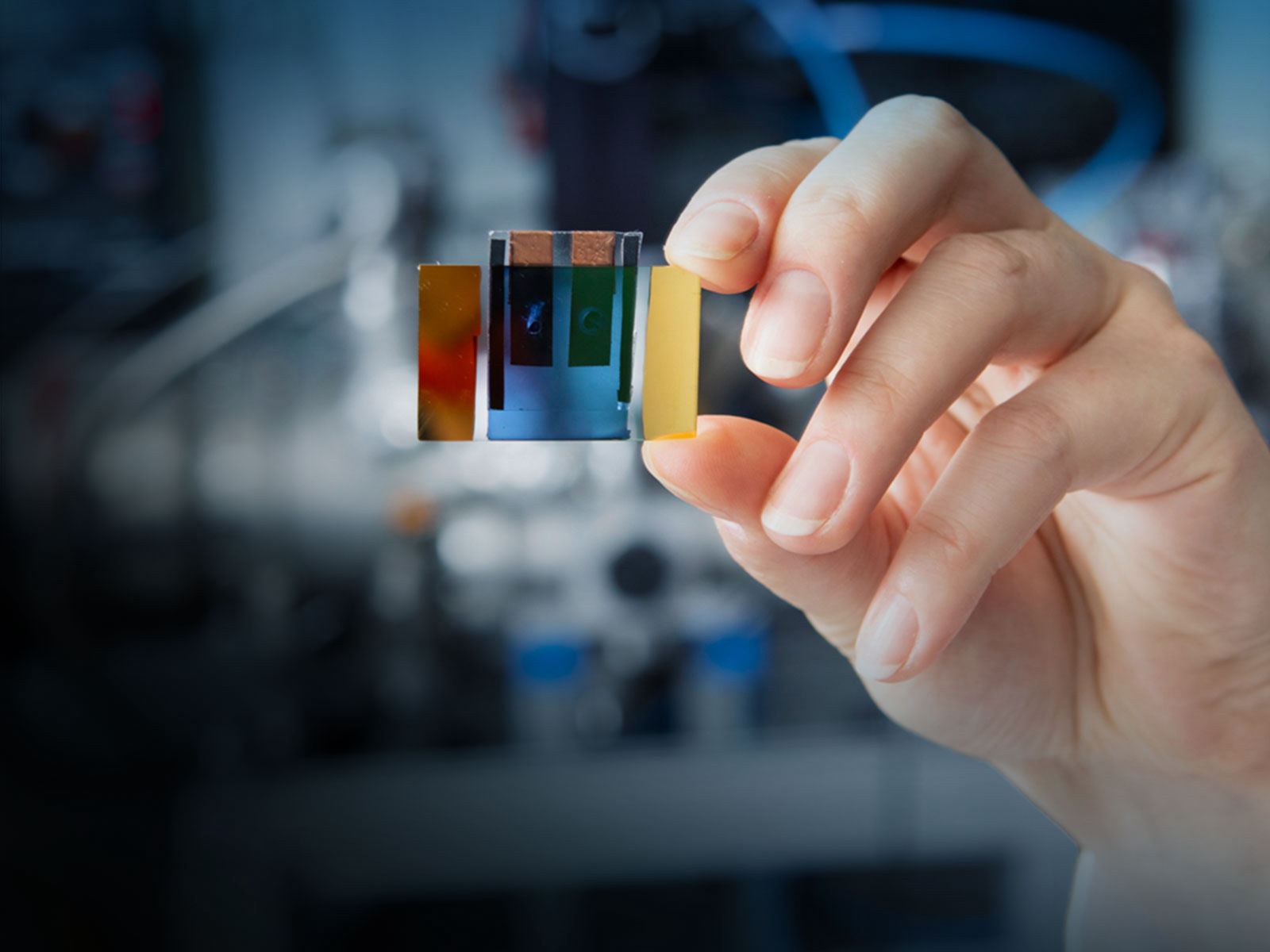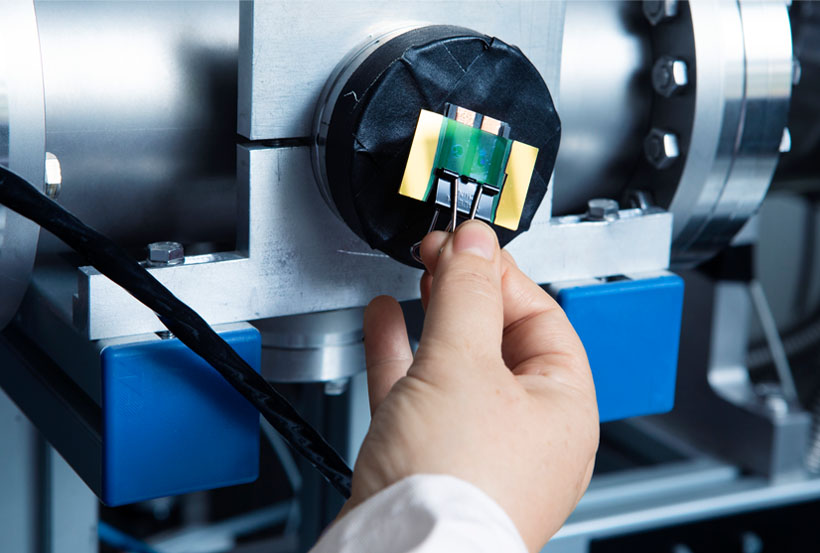
Nanofactories for green hydrogen
A DESY team is working on a new, visionary variant of the climate-friendly fuel. PETRA IV is expected to provide important impetus.
Hydrogen is considered to be an important building block of the energy transition. In the future, it is to serve as a climate-friendly fuel and enable the production of green steel. To achieve this, it needs be produced without releasing CO2, for example by electrolysing water using solar power.
A DESY team is working on a new, visionary alternative, and PETRA IV ought to lend important impetus to these efforts. DESY physicist Simone Techert describes the idea as follows: “Just as the leaves of a plant convert light directly into chemical energy, we want to develop a solar cell that produces hydrogen directly.”

“We want to develop a solar cell that produces hydrogen directly.”

Her group has already succeeded in building the first prototypes – tiny cells that are thinner than a human hair. They are made up of several layers, like a sandwich. The top layer, consisting of light-sensitive plastic molecules, serves as the solar cell, collecting light and converting it into electricity.
The ultrathin solar cell delivers the current directly to the layer underneath. This splits water into oxygen and hydrogen with the help of the electricity and small amounts of light. Some questions still need to be clarified, though. When light enters the cell, it creates a certain degree of disorder on the molecular level. Such disorder can be disruptive, obstructing the flow of current in the cell, for example. But by cleverly designing the materials, the disorder can be channelled in such a way that it actually enhances the flow of electrons and favours the conversion of sunlight to hydrogen.
“We still need to develop a better understanding of these processes,” as Simone Techert points out. “PETRA IV can help us to study the disorder and its dynamics in much more detail than before and to figure out which materials we need to use where so as to create the most efficient system.” Even if some questions are still unanswered, the scientists already have an idea as to what a green hydrogen factory made of nanocells might look like. “Perhaps something like a tree with its leaves, whose surfaces are arranged in a three-dimensional configuration,” Simone Techert speculates. “They could be integrated into our urban architecture, for example in the façades and on the roofs of houses.”

Heidrun Hillen
I am happy to answer your questions about PETRA IV.
Further research topics

Healthcare
How can diseases be better tackled?

New materials
How can we save resources?

Energy
How can we make more resilient materials?

New technologies
What do we need for the digital world of tomorrow?

Earth and the environment
How do we preserve our ecosystems?

Cultural heritage
How can we preserve our cultural treasures?


